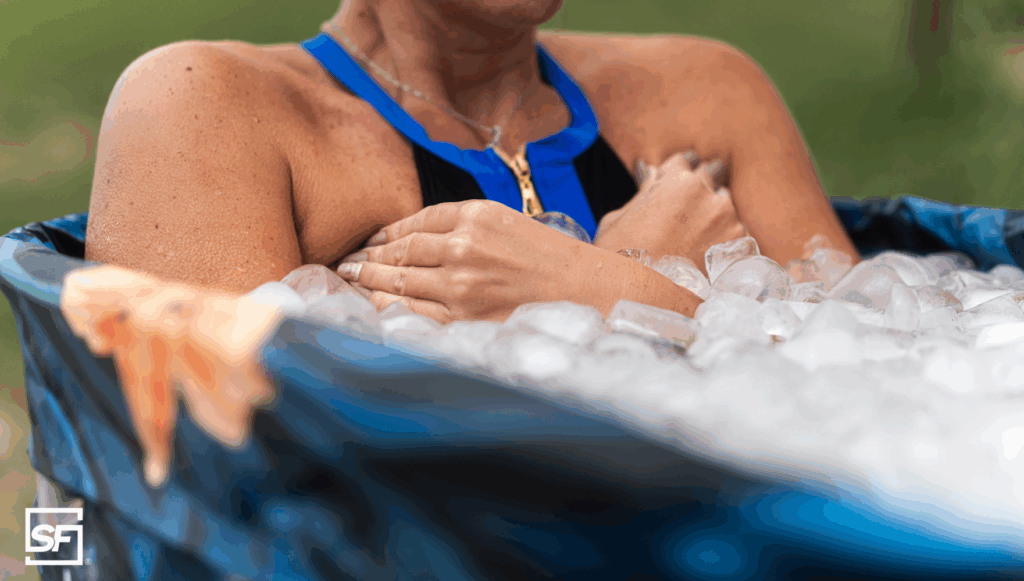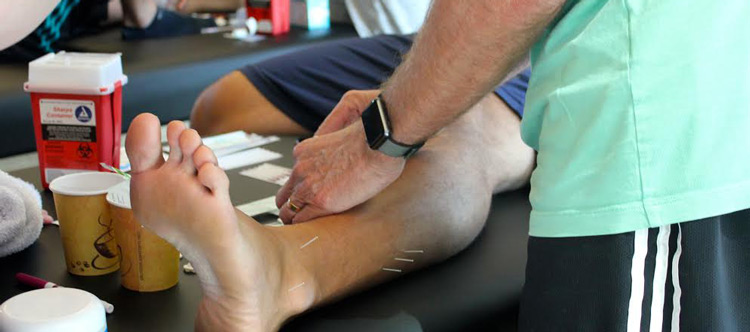Ice Baths. Powerful Evidence-Based Science or Social Media Fad?
All the hot weather we experience in the summer can make cold plunges or ice baths sound very tempting. Social media influencers tout all the benefits of a cold plunge, but here at Structure & Function Education, we like to take a look at what the evidence says… so, ice baths – evidence based science or social media fad?
What does the evidence say about Ice Baths?
A cold plunge, also known as cold-water immersions or ice baths, are a short dip in cold water, typically around 50°F or colder. This can include a bathtub filled with ice water or the “polar bear plunge”, where you go for a swim in a naturally cold body of water (usually in winter). The duration of a cold plunge varies widely from a recommended 30 seconds when first acclimating to the experience, to up to 20 minutes for experienced plungers.
When taking an ice bath, the cold water reduces your body and skin temperature. This change in temperature narrows your skin’s blood vessels (vasoconstriction) and moves blood to your core as your body tries to stay warm. When you get out of an ice bath, your blood vessels expand (vasodilation) and pump the oxygen- and nutrient-rich blood back to your body’s tissues, including your muscles.
According to the Mayo Clinic Health System, research on cold-water immersion has found evidence that it helps reduce the degree of exercise-induced muscle damage that can occur after physically challenging activities. Less damage leads to less inflammation, which in turn reduces soreness and helps restore physical performance the next day. These benefits help explain the popularity of cold-water immersion or ice bathing with professional athletes, who initially popularized the trend. Popular sports brand Adidas also notes that the cold temperature of an ice bath may improve blood flow and circulation, as well as activate your immune system. Cold water immersion can also lead to decreased metabolic activity, as well as alterations in hormone production and blood flow.
Ice Baths, Not Only Physical Benefits
The effects of cold-water immersion on mental health have not been widely studied at this time. Limited research shows that cold-water immersion may improve your mood, including a 2022 study published in Lifestyle Medicine. The study found that people who took a 20-minute soak in 55-degree seawater had significantly improved self-esteem and decreased tension and anger. People who soaked for 18 minutes had similar results.
Another study found that five minutes of cold-water or ice baths immersion in 68-degree water helped improve alertness, decrease nervousness, and reduce stress. It is important to note that both studies were small and included less than 50 healthy adults, but the findings are interesting!
Are Ice Baths Worth The Risk?
However, in an article hilariously titled “You’re not a polar bear: The plunge into cold water comes with risks”, the American Heart Association warns that the risks of ice baths immersion may not be worth the risk. Experts caution that for some people, shocking the body with cold water could do more harm than good, even at less-than-frigid temperatures. The National Center for Cold Water Safety warns that sudden immersion in water under 60 degrees Fahrenheit can kill a person in less than a minute. Plunging the body into cold water triggers a sudden, rapid increase in breathing, heart rate and blood pressure known as the cold shock response. That can cause a person to drown within seconds if they involuntarily gasp while their head is submerged.
The American Heart Association also warns that additional risks of cold-water immersion include the stress placed on the heart, making it work harder. As blood rushes away from the extremities to the body’s core to protect vital organs, the arms and legs are left without good circulation, which can lead to a loss of strength and coordination. Rapid loss of body heat also can lead to hypothermia, making it harder to think clearly or move well. Being immersed in cold water triggers hypothermia faster than just being out in the cold, because water takes heat away from the body 25 times faster than air.
Ice Baths & Cryotherapy
While the scientific merits of submerging the entire body in cold water is still up for debate, the benefits of Cryo- or Cold therapy are much more well established. We explore the benefits of Cryotherapy in our new online learning course – “Cryotherapy: A Clinician’s Guide to Effective Cold Therapy”. This online learning course seeks to describe the physiological mechanisms of cold application to the body, compare and critically evaluate the current debates surrounding the RICE protocol and alternative injury management strategies, and examine the strengths and limitations of existing research. The course also seeks to help clinicians create a personalized clinical approach to cryotherapy application that integrates current evidence-based research and considers individual patient needs and injury characteristics.





